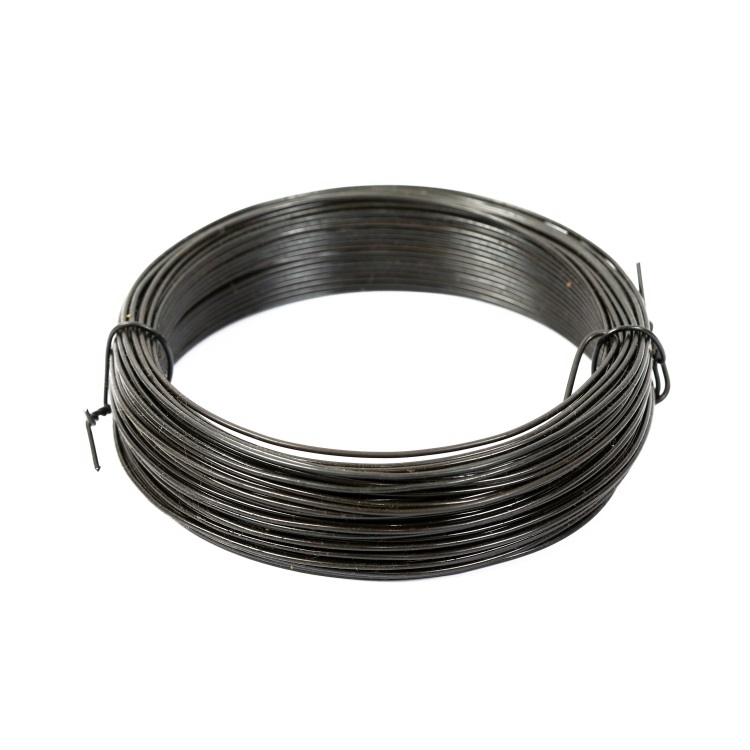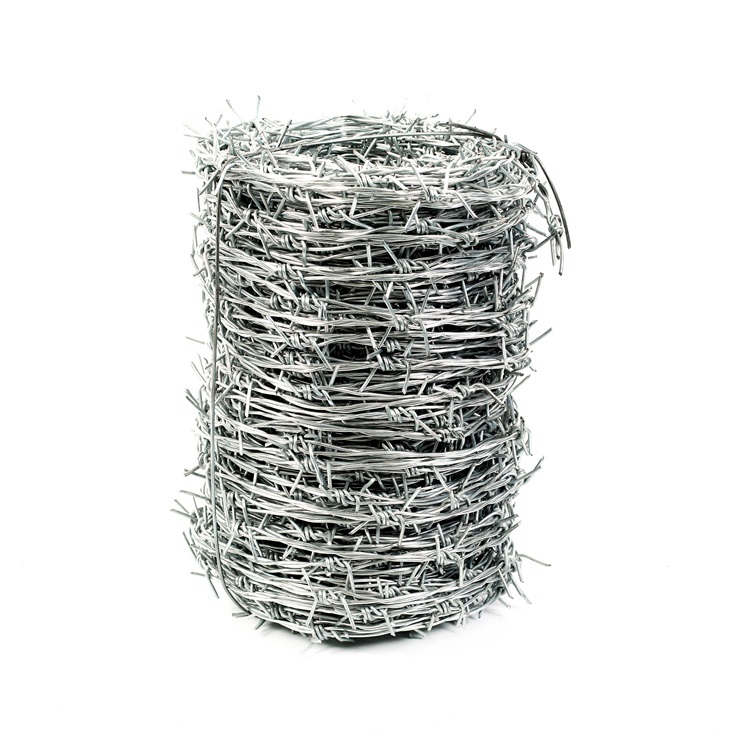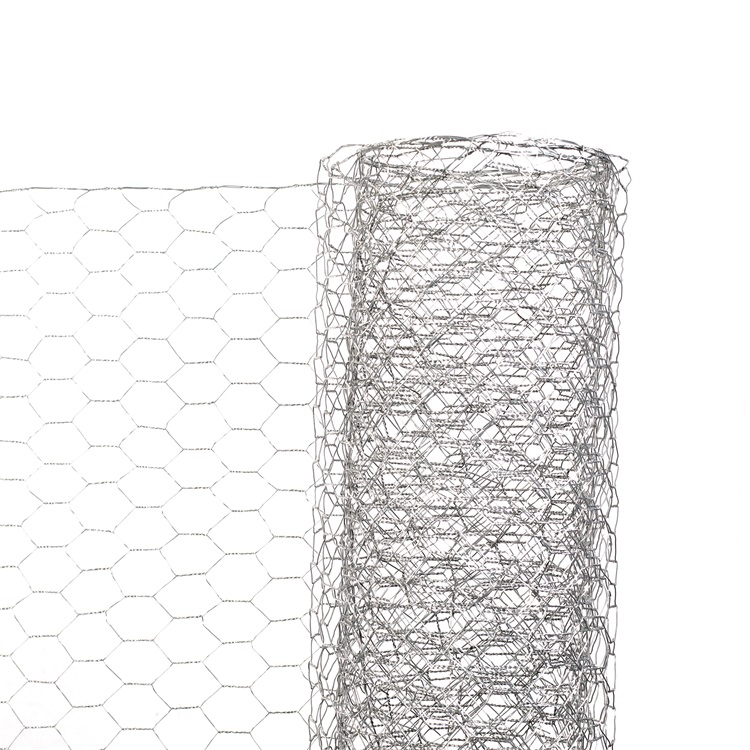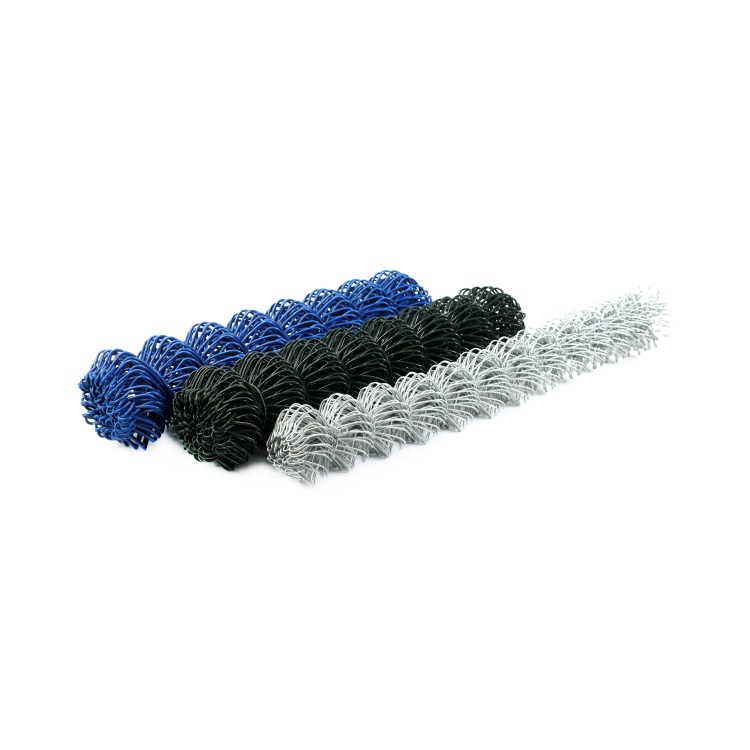Discount Blade Barbed Wire: High-Security Fencing & OEM Wire Solutions
Introduction to Advanced Perimeter Security Solutions
In an era where robust security infrastructure is non-negotiable, B2B stakeholders in critical sectors are continually seeking high-performance, cost-effective perimeter defense systems. The global market for security fencing, valued at approximately USD 2.5 billion in 2022 and projected to grow at a CAGR of 6.2% through 2030, underscores the escalating demand for reliable solutions. Amidst this growth, materials that offer both superior deterrence and longevity are highly prized. One such material gaining significant traction is the specialized form of barrier known as discount blade barbed wire. This engineered fencing component provides an unparalleled level of physical security and acts as a formidable deterrent against unauthorized access across a myriad of industrial and governmental applications. Its unique construction and formidable appearance make it a preferred choice for enhancing security without prohibitive expenditure.
Industry trends indicate a shift towards integrated security systems where physical barriers like blade barbed wire complement electronic surveillance and access control. Moreover, there's an increasing emphasis on materials that provide exceptional corrosion resistance and extended service life, reducing total cost of ownership. The demand spans sectors from petrochemical plants requiring stringent safety protocols to logistics hubs safeguarding valuable assets, all seeking reliable, durable, and economically viable solutions. The related components such as discount common nails q195 q235, discount concrete nail hair, discount square concrete nails, and discount stell concrete nail y01-h are often integral to the secure installation of these systems, highlighting the need for a holistic approach to procurement.
Manufacturing Process of Discount Blade Barbed Wire
The production of discount blade barbed wire is a sophisticated industrial process, meticulously designed to yield a product that offers superior security performance and durability. It involves several critical stages, each contributing to the final product's strength and corrosion resistance. The primary materials consist of high-tensile steel wire for the core and galvanized steel strips for the blades, ensuring both structural integrity and resistance to environmental degradation.
Process Flow Overview:
- Material Preparation: High-carbon steel wire (typically 2.5mm to 3.0mm diameter) is selected for its tensile strength. This wire undergoes hot-dip galvanization, a process conforming to ASTM A123/A123M standards, applying a protective zinc coating (typically 60-290 g/m²) to prevent rust and extend service life. Steel strips (0.5mm to 0.6mm thickness) are also galvanized or stainless steel (e.g., AISI 304 or 430) is used for the blades, based on specified corrosion resistance requirements.
- Blade Stamping: Precision machinery stamps sharp, intricate blade profiles (e.g., BTO-22, BTO-30, CBT-65) from the galvanized steel strips. The stamping process ensures consistent blade geometry and optimal sharpness for maximum deterrence.
- Wire Coiling and Assembly: The galvanized high-tensile core wire is fed into an automated machine. Simultaneously, the stamped blades are crimped firmly around the core wire at precise intervals. This process ensures that the blades are securely attached and maintain their orientation for effective security.
- Coil Formation: The assembled blade wire is then spirally coiled into concertina or straight-line configurations, depending on the application. Concertina coils are typically clipped at various points to create a robust, interlaced barrier that is extremely difficult to penetrate or cut.
- Quality Control & Testing: Throughout the process, stringent quality control measures are implemented. This includes visual inspection, measurement of wire diameter, blade length and spacing, and verification of zinc coating thickness. Tensile strength tests are conducted on wire samples according to ISO 16120-2:2017 standards, ensuring the wire meets specified strength parameters (typically 1200-1600 MPa). Overall product quality often adheres to ISO 9001:2015 quality management systems, while specific product dimensions and construction can follow standards like ASTM F1910 for razor wire barriers.
- Packaging: Finished coils are compressed, wrapped in waterproof paper, and often secured with woven bags or palletized for efficient transport and storage.
Service Life and Target Industries:
Due to the robust galvanization and high-quality steel, discount blade barbed wire offers an exceptional service life, typically ranging from 10 to 25 years in standard outdoor environments, significantly exceeding untreated alternatives. In more aggressive coastal or industrial atmospheres, heavy galvanization or PVC/powder coating can extend this further. Target industries include military installations, correctional facilities, critical national infrastructure (power plants, airports, water treatment facilities), petrochemical plants, metallurgy complexes, and extensive water supply & drainage systems where perimeter integrity is paramount.
Technical Advantages:
- Superior Deterrence: The razor-sharp blades present a significant physical and psychological barrier, deterring potential intruders more effectively than traditional fencing.
- Corrosion Resistance: High-quality galvanization ensures excellent resistance to rust and weathering, crucial for outdoor applications in diverse climatic conditions, leading to minimal maintenance and long-term performance.
- Durability and Anti-Climb Properties: The high-tensile core wire and robust blade attachment make it extremely difficult to cut with standard tools, significantly enhancing perimeter security. The concertina configuration creates an unstable, wide barrier, making climbing exceptionally challenging.
- Cost-Effectiveness: While providing advanced security, the manufacturing efficiency and long service life contribute to a highly cost-effective solution over its operational lifespan, making discount blade barbed wire a smart investment for B2B applications.
Technical Specifications and Parameters for Discount Blade Barbed Wire
Understanding the precise technical parameters is crucial for selecting the appropriate discount blade barbed wire for specific security needs. These specifications dictate the product's strength, deterrent capability, and longevity. Manufacturers adhere to stringent industry standards to ensure product consistency and reliability.
Typical Blade Barbed Wire Specifications:
These parameters are critical in determining the security level and environmental performance of the product. For instance, a heavier core wire gauge (lower mm value) and thicker galvanization directly correlate with increased resistance to cutting tools and prolonged service life, making it a more robust investment for long-term security infrastructure.

Application Scenarios and Strategic Implementations
The versatility and formidable nature of discount blade barbed wire make it indispensable across a spectrum of high-security and critical infrastructure applications. Its deployment significantly enhances perimeter integrity, acting as both a physical barrier and a powerful psychological deterrent.
Key Application Sectors:
- Military & Defense Facilities: Essential for securing military bases, training grounds, ammunition depots, and other sensitive defense installations where unauthorized access could have severe national security implications. Its robust construction resists tampering and cutting attempts.
- Correctional & Detention Centers: Used extensively to prevent escapes and control perimeter security in prisons, jails, and immigration detention facilities. The aggressive blade profile makes climbing extremely difficult and hazardous, ensuring containment.
- Critical Infrastructure: Power generation plants, electrical substations, water treatment facilities, airports, and communication hubs utilize blade barbed wire to protect against vandalism, sabotage, and terrorist threats. The inherent corrosion resistance, especially with heavy galvanization or specialized coatings, guarantees long-term protection in exposed environments, minimizing maintenance and enhancing system uptime ("energy saving" in terms of operational resources).
- Border Security: Deployed along national borders to deter illegal crossings and smuggling activities. The extended service life and durability are critical for large-scale, remote installations where frequent maintenance is impractical.
- Industrial & Commercial Security: Securing factories, warehouses, logistics centers, oil and gas facilities (petrochemical), and mining operations (metallurgy). The low total cost of ownership combined with high security makes it an attractive option for asset protection.
Case Studies and Customer Feedback:
A major European airport recently upgraded its perimeter security, opting for heavily galvanized discount blade barbed wire to supplement its existing chain-link fence. The installation of over 15 kilometers of CBT-65 concertina wire significantly reduced attempted incursions by 70% within the first year, demonstrating the product's superior deterrent capabilities. The airport security manager noted, "The visual impact alone is a powerful deterrent, and its robust construction has proven impenetrable against common cutting tools. The minimal maintenance requirements due to superior galvanization have also led to considerable operational savings."
Similarly, a large-scale data center facility in the US, requiring uncompromised physical security, implemented dual-layer blade barbed wire systems. Their security audit reported a 95% effectiveness rating in preventing unauthorized breaches. Feedback from their engineering team highlighted the "exceptional corrosion resistance and structural integrity" as key factors in their long-term security strategy, especially given the diverse weather conditions the facility experiences. This long-term reliability translates into direct "energy saving" by minimizing system downtime and repair costs.
These real-world applications underscore the effectiveness of properly specified and installed blade barbed wire in protecting high-value assets and critical infrastructure.
Customized Solutions for Discount Blade Barbed Wire Deployment
While standard configurations of blade barbed wire offer extensive utility, specific project requirements often necessitate tailored solutions. Recognizing that no two security challenges are identical, leading manufacturers provide comprehensive customization options to perfectly align the product with the unique demands of each B2B client.
Key Customization Parameters:
- Blade Profile and Density: Beyond standard BTO-22 or CBT-65, custom blade patterns and more aggressive designs can be engineered for heightened deterrence. The spacing and overlapping density of blades can also be adjusted to increase the difficulty of penetration.
- Core Wire Gauge and Material: For environments demanding extreme resistance to cutting, thicker core wires (e.g., 2.8mm to 3.0mm) can be specified. While galvanized steel is standard, stainless steel options (e.g., 304 or 316) are available for highly corrosive marine or chemical environments.
- Coating Options: In addition to standard hot-dip galvanization, options like PVC coating (green, black, or grey) or powder coating can be applied. These coatings offer enhanced aesthetic integration with the surrounding environment and provide an additional layer of corrosion protection, crucial for areas exposed to harsh chemicals or extreme weather conditions.
- Coil Diameter and Expanded Length: Custom coil diameters are available to match specific fence heights or support structures. For instance, smaller diameters (e.g., 300mm) for wall-top installations or larger diameters (e.g., 1000mm) for ground-level perimeter barriers. The number of clips per coil can be varied to adjust the expanded length and density of the concertina barrier.
- Installation Accessories: Manufacturers can provide a full suite of compatible installation accessories, including Y-arms, support brackets, tensioning wires, and specialized clips, all designed for optimal integration and simplified deployment. Related products like oem 12 gauge gi tie wire and oem 0.9mm black annealed wire can also be specified to meet exact installation needs.
Engaging with clients to understand their specific threat landscape, environmental conditions, and operational constraints is paramount. This consultative approach ensures that the customized discount blade barbed wire solution delivers maximum security effectiveness and long-term value, optimizing the investment for critical infrastructure protection.
Vendor Comparison and Selection Factors
Choosing the right supplier for discount blade barbed wire is as critical as the product itself. The market features numerous manufacturers, but significant disparities exist in product quality, manufacturing consistency, and adherence to international standards. A thorough vendor comparison, based on verifiable parameters, is essential for B2B procurement professionals to ensure authoritative sourcing and reliable performance.
Key Comparison Criteria:
- Material Quality & Certifications: Verify the use of high-tensile, ASTM-compliant galvanized steel for core wire and blades. Look for suppliers with ISO 9001 certification for quality management and adherence to specific product standards like ASTM F1910.
- Manufacturing Consistency: Assess the uniformity of blade stamping, crimping strength, and coil formation. Inconsistent quality can compromise the overall security effectiveness and lead to premature failure.
- Customization Capabilities: A reputable vendor should offer a range of blade profiles, wire gauges, coil diameters, and coating options to meet unique project specifications.
- Lead Time & Logistics: Evaluate the vendor's ability to meet required production schedules and logistics capabilities, especially for large-scale or international projects. Consider their experience with oem high quality custom gabion mesh box or oem chicken coop galvanized welded wire mesh orders which often require similar logistical precision.
- Technical Support & Warranty: Comprehensive pre-sales consultation and robust after-sales support, including installation guidance and a clear warranty policy, are indicators of a reliable partner.
- Pricing & Value Proposition: While "discount" implies cost-effectiveness, it should not come at the expense of quality. Compare pricing structures against the full lifecycle cost, including durability, maintenance, and replacement frequency.
Vendor Comparison Table (Illustrative):
This illustrative comparison highlights the importance of scrutinizing vendor capabilities beyond initial pricing. A slightly higher upfront investment in a superior product like oem welded wire mesh fence panels in 12 gauge or premium blade barbed wire from a certified vendor often translates to significant savings over the product's lifespan due to enhanced durability, reduced maintenance, and superior security performance.

Commitment to Quality, Trust, and Support
Building trust in the B2B sector demands more than just a quality product; it requires a robust framework of certifications, transparent commitments, and reliable support. Our dedication to these principles ensures that clients receive not just discount blade barbed wire, but a complete, dependable security solution backed by industry-leading standards.
Certifications and Compliance:
Our manufacturing processes and products strictly adhere to international quality and safety standards. This includes ISO 9001:2015 for Quality Management Systems, ensuring consistent production quality. Materials like our galvanized steel meet or exceed ASTM A123/A123M for zinc coating, and our razor wire configurations typically comply with ASTM F1910 standards for concertina wire barriers. These certifications provide authoritative assurance of product performance and reliability.
Partner Clients and Years of Service:
With over two decades of specialized experience in metal fabrication and security solutions, we have built enduring partnerships with governmental agencies, large industrial conglomerates, and defense contractors worldwide. Our extensive project portfolio, including perimeter solutions for major airports, national borders, and critical utility sites, stands as a testament to our proven expertise and reliability in delivering high-stakes security infrastructure.
Warranty and After-Sales Support:
- Comprehensive Warranty: We offer a robust warranty of 10 to 15 years on our discount blade barbed wire against manufacturing defects and premature corrosion under normal operating conditions. This commitment reflects our confidence in product durability and quality.
- Dedicated Technical Support: Our team of experienced engineers and technical specialists provides comprehensive support from initial consultation and design to installation guidance and post-deployment troubleshooting.
- Global Reach & Responsiveness: With a streamlined supply chain and logistics network, we ensure prompt delivery and responsive support, minimizing downtime and maximizing project efficiency globally.
Lead Time and Fulfillment:
Typical lead times for standard discount blade barbed wire orders range from 2 to 4 weeks, depending on order volume and specific customization requirements. For large-scale projects or bespoke solutions, a detailed production and delivery schedule is provided and rigorously adhered to. Our efficient manufacturing and logistics capabilities ensure reliable fulfillment, critical for maintaining project timelines.
Frequently Asked Questions (FAQ)
- Q1: What exactly is discount blade barbed wire?
- A1: It is a modern, high-security fencing material made from a strip of steel pressed into a sharp blade form and then crimped onto a high-tensile core wire. It is engineered to create a formidable physical and psychological barrier, offering superior deterrence compared to traditional barbed wire.
- Q2: What are the primary uses of blade barbed wire?
- A2: Its primary uses include securing military bases, prisons, government buildings, critical infrastructure (power plants, airports), industrial facilities, and borders. It's ideal for any location requiring enhanced perimeter security.
- Q3: How does blade barbed wire differ from traditional barbed wire?
- A3: Traditional barbed wire uses pointed barbs twisted around a main wire. Blade barbed wire features actual razor-sharp blades, offering a far more aggressive and effective deterrent against climbing and cutting attempts. It is significantly harder to bypass or dismantle.
- Q4: What maintenance does it require?
- A4: Thanks to high-quality galvanization, blade barbed wire requires minimal maintenance. Periodic visual inspections for damage or tampering are recommended, but extensive rust prevention or repairs are typically unnecessary for many years.
- Q5: Can blade barbed wire be customized?
- A5: Yes, highly. Customization options include varying blade profiles, core wire gauges, coil diameters, expanded lengths, and additional protective coatings (e.g., PVC or powder coating) to meet specific security levels and environmental demands. This ensures optimal integration with existing security infrastructure or specific project requirements.
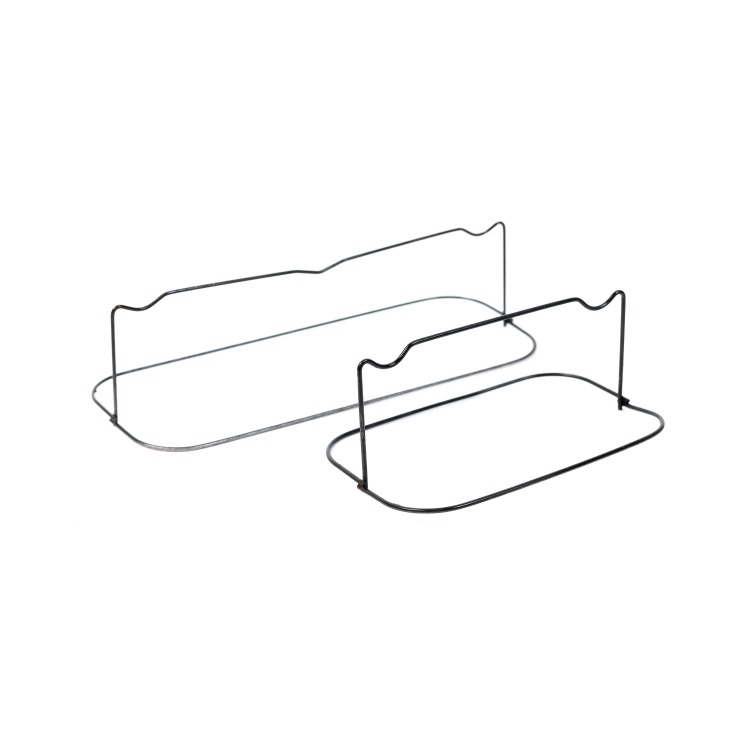
Conclusion: Strategic Security with Discount Blade Barbed Wire
The implementation of discount blade barbed wire represents a strategic investment in robust, long-term perimeter security. Its formidable physical deterrence, combined with exceptional durability derived from high-quality materials and manufacturing processes, positions it as an indispensable component for protecting critical assets and infrastructure. From military installations to petrochemical plants, the advantages of corrosion resistance, extended service life, and cost-effectiveness provide a compelling value proposition for B2B decision-makers and engineers.
By prioritizing adherence to international standards, offering extensive customization options, and providing comprehensive technical and after-sales support, suppliers empower clients to configure security solutions that are precisely tailored to their operational environment and threat landscape. This comprehensive approach ensures not only immediate security enhancement but also optimized total cost of ownership over the lifespan of the barrier system. Investing in high-quality blade barbed wire is a proactive step towards uncompromised security and operational resilience.
References
- ASTM International. (2020). ASTM A123/A123M-17: Standard Specification for Zinc (Hot-Dip Galvanized) Coatings on Iron and Steel Products. West Conshohocken, PA: ASTM International.
- International Organization for Standardization. (2015). ISO 9001:2015: Quality Management Systems – Requirements. Geneva, Switzerland: ISO.
- International Organization for Standardization. (2017). ISO 16120-2:2017: Non-alloy steel wire rod for conversion to wire – Part 2: Specific requirements for general purpose wire rod. Geneva, Switzerland: ISO.
- MarketsandMarkets. (2023). Security Fencing Market - Global Forecast to 2030.
- National Institute of Justice. (2007). Razor Wire Perimeter Barriers. NIJ Standard-0301.00. Washington D.C.: U.S. Department of Justice.
-
Discount 16 d Common Nails - Bulk, Durable, Fast Shipping
NewsNov.17,2025
-
Finish Nails - Durable, Rust-Resistant, Clean Countersink
NewsNov.17,2025
-
Barbed Wire: Galvanized, High-Tensile Security Fencing
NewsNov.17,2025
-
Discount 16 d Common Nails – Bulk, Durable, OEM Options
NewsNov.17,2025
-
Welded Steel Tube Temporary Fence – Galvanized, Durable
NewsNov.04,2025
-
Barbed Wire – High-Tensile, Galvanized, Bulk & Fast Shipping
NewsNov.04,2025









